With hundreds of different chicken breeds, there is a rainbow of unique birds with beautiful plumage to choose from when building or adding to your flock.
Red chicken breeds are always some of the most vibrant of the bunch, ranging from shades of subtle auburn to bright, sleek crimson.
But which breeds are right for you?
Below are 9 of our favorite classic red chicken breeds, from egg layers to meat chickens and even rarer exhibition birds.
Whether you raise your chickens for eggs or meat or just enjoy having them around as companions, you’re sure to find at least a few varieties here you’ll love.
Table of Contents
ToggleRhode Island Red
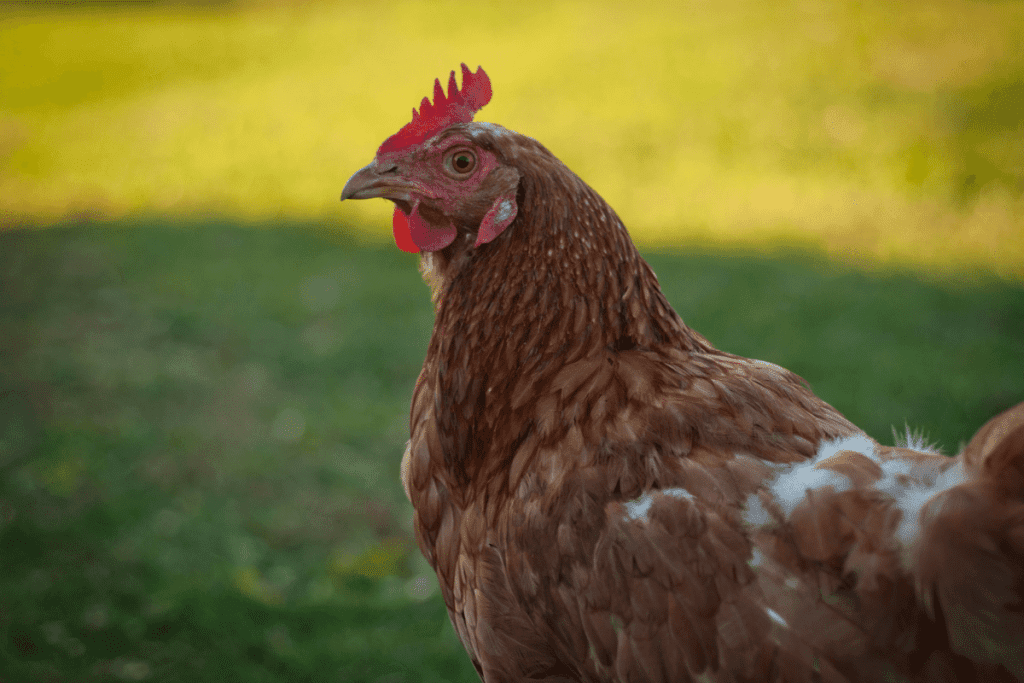
Is any red chicken breed more classic and iconic than the Rhode Island Red?
As its name suggests, this handsome breed with glossy, deep red plumage and greenish-black tail feather accents originated in Rhode Island (as well as neighboring state Massachusetts) in the 1800s.
It was developed via cross-breeding of Asian breeds like Cochins and Javas with Brown Leghorns.
The Rhode Island Red is an all-American dual-purpose breed useful for its large, brown eggs and flavorful meat!
They’ve also proven to be useful candidates for cross-breeding and developing new breeds, making them one of the most versatile types of chicken globally.
Reds have also become a staple breed in the backyards of modern hobby farmers who have kept them as pets in more recent years.
Incredibly hardy, adaptable, and active, these birds are a delight to observe and are especially great for newbies to owning chickens.
They get along well with most breeds, though roosters are often slightly territorial towards one another.
As a fairly tall, lean, medium-sized bird, the Rhode Island Red typically weighs around 6 to 8 pounds, with males being slightly heavier and taller than females.
Their combs are usually either single- or rose-shaped.
Further reading: Rhode Island Red Growth Chart
Red Sex-Link
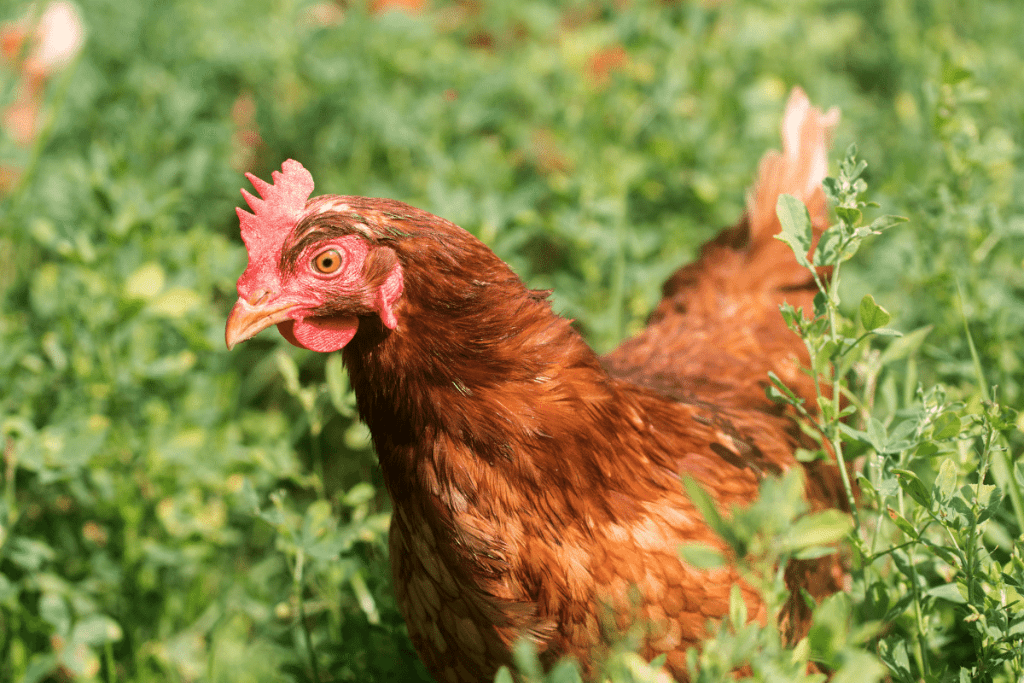
Another wildly popular red chicken breed is the red sex-link.
This breed’s name refers to how the sexes of these particular chickens are determined–the exact color of a sex link varies slightly depending on the bird’s sex, which makes things a lot simpler when separating male and female chicks!
Sex link chickens exist in various color types.
Still, red sex links, in particular, were developed via cross-breeding Rhode Island and New Hampshire Reds with White Rocks, Wyandottes, Delawares, and Rhode Island Whites.
Other perks of being so carefully and selectively bred include the breed’s superb egg-laying abilities, calm demeanor, and ultra-hardy nature, meaning it can thrive in various climates.
These medium-sized birds can lay as many as 300 large, brown eggs per year and will continue to lay frequently, even on the coldest winter days!
In addition to its hardiness and usefulness, the red sex link is also a very inexpensive, accessible breed with a gentle disposition, making it an excellent option for novice hobby farmers who are new to owning chickens.
Its bright, sunny, orange-red plumage makes it stand out in any flock.
Red Sussex
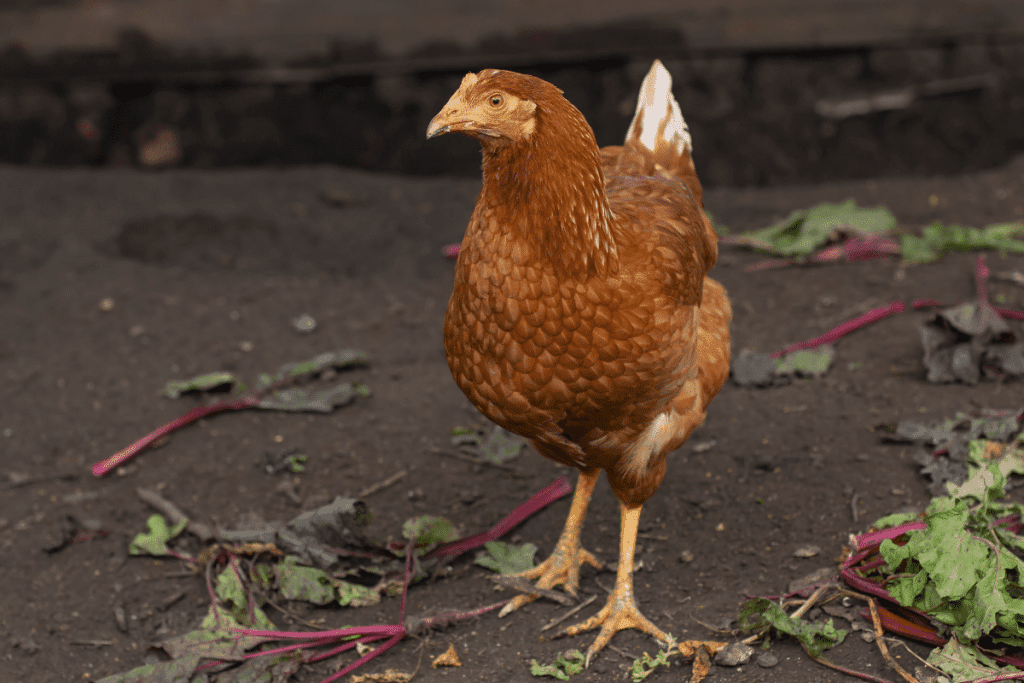
The Sussex is one of many chicken breeds that exist in a wide range of colors and plumage patterns, but the red Sussex is one of the most visually stunning.
Their feathers are a deep brownish crimson, with dark brown or black accents around the neck and tail feathers. Red Sussex roosters are especially vibrant and glossy in color.
The comb is relatively small, pinkish-red, and usually single-shaped.
As its name suggests, this robust, heavy breed was developed in the Sussex region of the UK, and it’s one of the oldest chicken breeds in the country.
It’s uncertain exactly when this useful English breed was developed, but they were first officially documented at London Zoo’s first-ever poultry show in 1845.
It took quite some time for the breed standard to be developed in 1902.
Not long after the Sussex rose to popularity in the UK as an excellent dual-purpose chicken, it was exported to the United States around 1910.
It was one of the world’s top commercial meat breeds for many years, though today, it is more commonly kept for eggs, as family pets, and as a show bird.
Red is one of Sussex’s eight different color variants.
Aside from their unique colors, all eight varieties are otherwise physically identical.
The typical Sussex chicken is large-bodied, weighing anywhere from 6 to 10 pounds, with males usually larger than females.
The Sussex is an exceptionally hardy, docile, and inexpensive breed.
It makes the birds attractive and rewarding regardless of whether you want to keep them for eggs, meat, exhibitions, or simply as pets!
Further reading: Are Sussex chickens aggressive?
New Hampshire Red
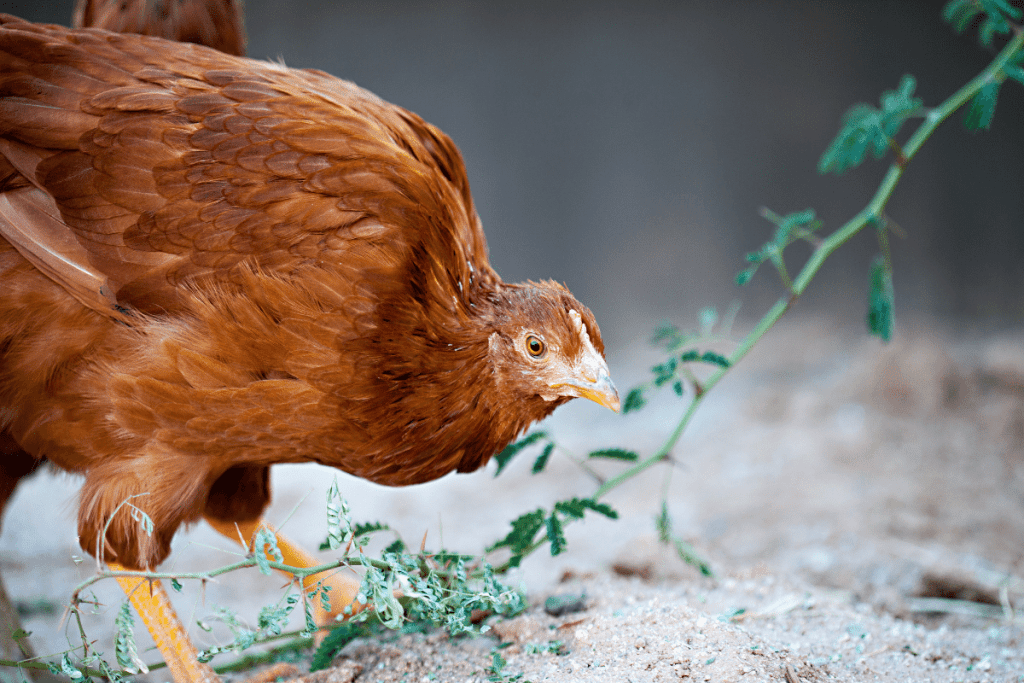
The New Hampshire Red is almost as iconic as the Rhode Island Red breed from which it originated, especially for a relatively newer chicken breed!
As their name implies, New Hampshire Red chickens were developed via the careful, repeated selective breeding of particularly large and healthy Rhode Island Reds.
As a result of this careful breeding, these chickens are like an optimized, new-and-improved version of the traditional Rhode Island Red.
Though the two breeds closely resemble one another, New Hampshire Reds grow much more quickly than their predecessors, lay more eggs, and are slightly larger, hardier, and meatier overall.
In terms of color, this breed’s plumage is a lighter orange compared to Rhode Island’s deeper, darker red.
They are similar in size, but the New Hampshire is noticeably heavier, ranging from around 7 to 10 pounds.
Like most breeds, roosters are larger, taller, and heavier than hens.
They also exist in a bantam variety, a fraction of the size at only around 2 pounds.
Hens are gentle birds and good layers and sitters, so they breed easily in captivity.
They’ve even been used to produce new hybrid breeds, such as the Delaware, which was developed in the 1940s.
Welsummer
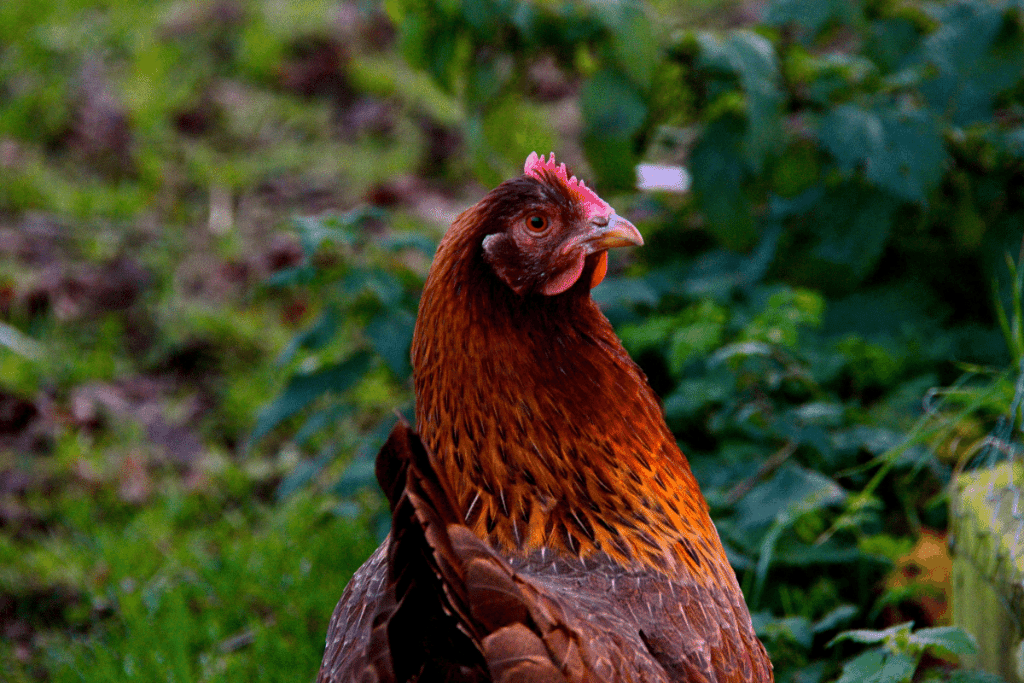
This Dutch dual-purpose breed has duller, more subdued plumage than some of the more vibrant breeds on this list, but its plumage is no less beautiful!
The Welsummer originated in the small Dutch village of Welsum in the early 20th century and was developed through the cross-breeding of various common local breeds, such as Rhode Island Reds, Cochins, Partridge Leghorns, and Barnevelders.
Further Reading: Chicken Egg Guide For Barnevelder Hens
The red partridge is the primary and most popular color variety of this breed, with most birds having light brownish-orange heads and hackle feathers which fade into a darker brown around the wings and body.
The tail typically has black or dark brownish feathers.
Roosters tend to have more brightly-colored, glossy plumage than hens, with their black accent feathers having a greenish, iridescent sheen.
The Welsummer is an average-sized, docile bird at around 5 to 8 pounds, with roosters heavier and taller than hens.
It also exists in a bantam variety, with much smaller body measurements overall, and typically maxes out at around 2 to 3 pounds.
Hens lay around 150 to 180 average-sized brown-colored eggs per year, and they are also occasionally raised by independent farmers for meat production purposes.
ISA Brown
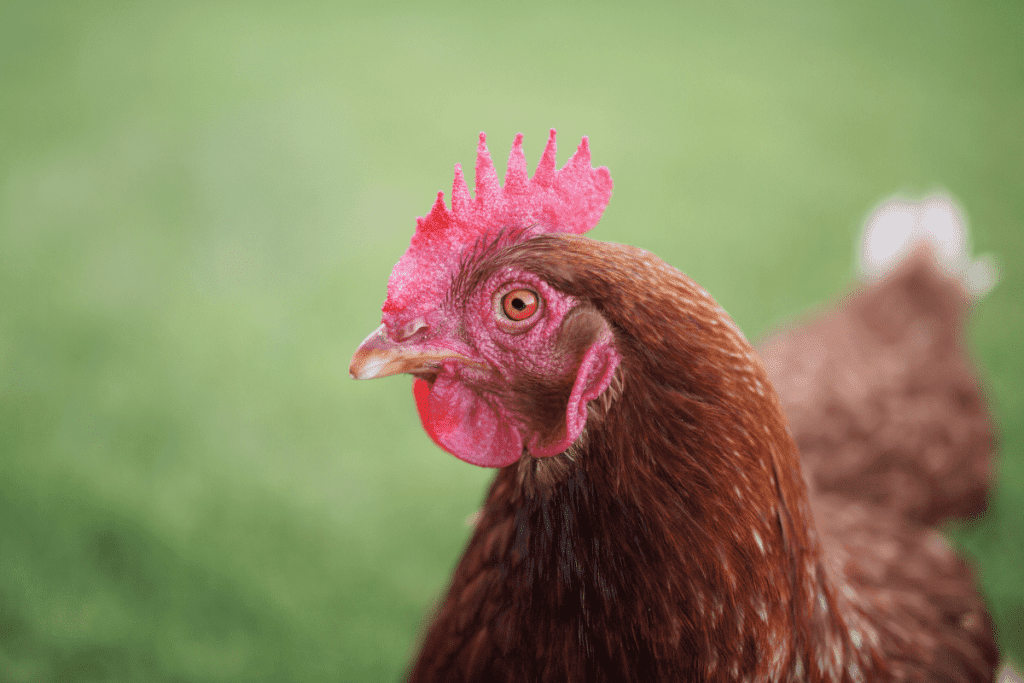
The “ISA” in this breed’s name stands for Institut de Selection Animale.
This French company developed the ISA Brown in the late 1970s as a commercial egg-laying breed.
The cross-breeding which led to this breed’s development likely involved Rhode Island Reds and Whites.
Unfortunately, the company has kept the exact list of breeds used in its production a secret from the public.
ISA Brown birds are, above all else, excellent egg layers.
Hens mature quickly, begin laying quickly, and can produce more than 300 large, delicious brown eggs per year.
These hybrid chickens will continue laying fairly regularly in the colder months, making them excellent winter layers.
Though it is a very new breed, the ISA Brown is extremely popular amongst various poultry owners.
They are great as egg producers and make excellent backyard chickens, so large corporations and humble hobby farmers greatly enjoy these carefully-designed, gentle yet active birds.
They’re inexpensive and easily accessible, so they’re also a good choice for poultry enthusiasts who are new to the hobby.
Gold Sebright
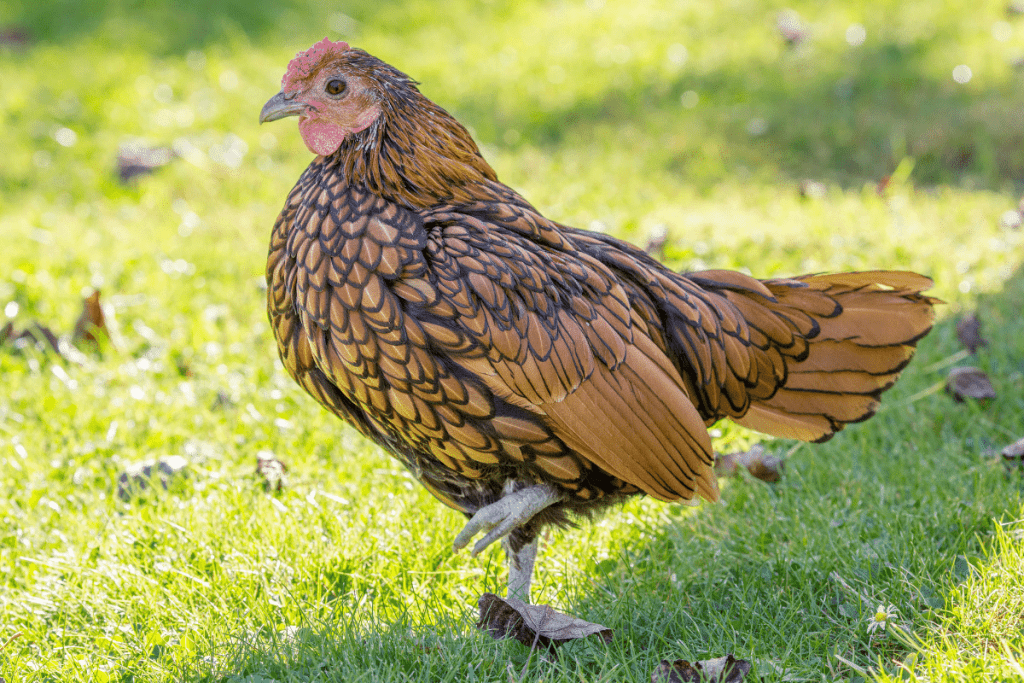
The Sebright is the first true bantam breed on this list, meaning it only exists as a bantam and has no standard-sized equivalent.
As a result, the birds are very small and don’t produce many eggs or much meat, but they’re great pets and popular exhibition birds.
They’re one of the UK’s oldest bantam breeds, originally developed in the early 1800s.
Though Sebright chickens exist in a few different color patterns, the gold Sebright is perhaps the most attractive variety.
They only weigh about a pound or so, but there’s a lot of personality and charm in such a tiny bird.
They almost look more like rather large songbirds than chickens at a glance!
The breed’s distinctly tall, proud posture further accentuates its handsome plumage, which is primarily auburn with brown or black accents bordering the tips of each feather.
Its wings point downward opposite the direction of its puffed-out chest, giving it an amusingly haughty-looking gait!
The Sebright’s tail feathers are long and tall, even on the hens, and both males and females have a very lean, angular, and athletic build.
Although Sebrights aren’t the most useful or practical pet chickens to own, they are incredibly unique and have excellent, active yet gentle temperaments.
However, their small size and non-aggressive nature make them more fragile and less tolerant of cold climates than most of the other larger, hardier, and more popular breeds mentioned here.
Check out some other small chicken breeds in our list here.
Blue Laced Red Wyandotte
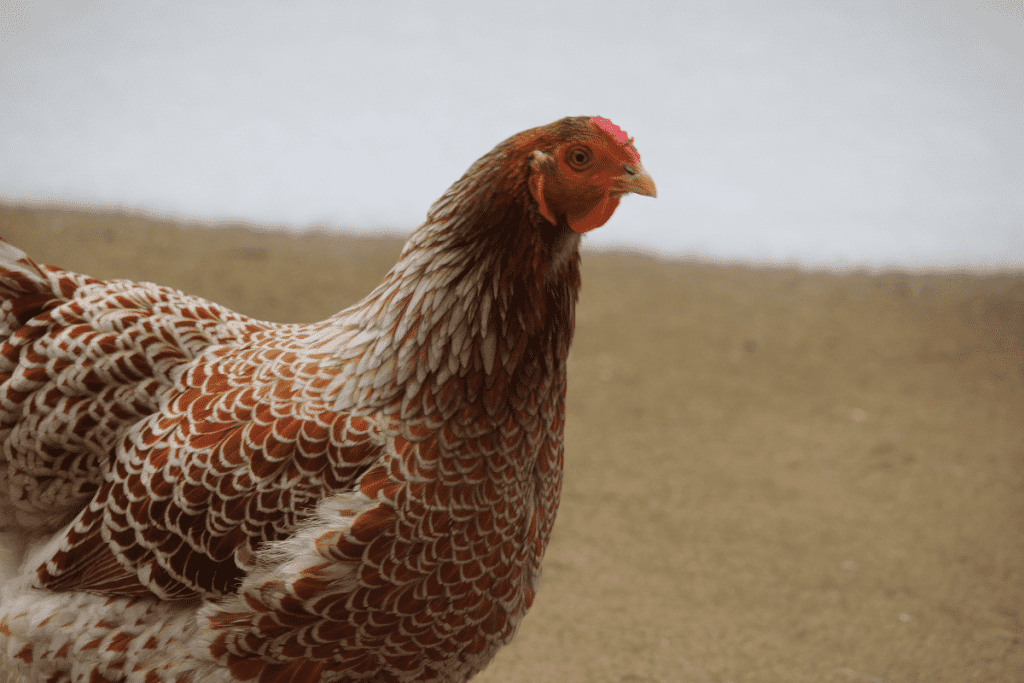
The blue-laced red Wyandotte is easily the most ornate-looking bird on this list.
A typical BLRW has solid dark red feathers atop its head, which cascade down the neck and gradually fades into a lighter shade.
The body is mainly a dark auburn, with each feather outlined in beautiful bluish-grey accents.
The tail feathers are almost entirely the same bluish-grey shade.
This American breed has existed since the 1870s and is now available in various colors and patterns.
Still, the blue-laced red color variety is one of the most prized amongst hobby farmers.
Aside from their color differences, all varieties of the Wyandotte adhere closely to the breed standard: a large, round, heavy-bodied 6 to 9-pound bird with clean legs and a rose comb.
It is believed this hardy breed was developed through the complex cross-breeding of several different breeds, mainly Brahmas and Hamburgs.
Unfortunately, though, its early history isn’t very well-documented.
“Wyandotte” refers to the indigenous Wyandot people, more commonly known today as Hurons.
Today, Wyandottes, including the handsome blue-laced red variety, remains a popular dual-purpose breed.
Hens lay large, brown eggs and are excellent layers, and their meat is rich and flavorful.
They’ve also become a prominent show breed in more recent years.
In short, they’re an excellent choice of domestic chicken for backyard chicken coops of all kinds, regardless of the climate.
Red Cochin

The red Cochin is a large bird with absolutely stunning rich, deep red plumage, so it’s always bound to stand out in most backyard coops.
Its heavily feathered legs are also an identical dark auburn shade, giving the typical Cochin the amusingly adorable appearance of wearing fancy boots!
This breed of chicken originating in China is a fairly older and well-established one.
It has existed in America and much of Europe since the mid-1800s.
According to the breed standards, Cochins are larger chickens and generally weigh around 8 to 12 pounds, with roosters occasionally weighing as much as 15 pounds!
It is also available in a much smaller bantam variety, which usually only weighs in at about 2 pounds.
Because they are an older breed and are hardy, Cochins breed easily in captivity.
This has led to the development of a wide range of plumage colors and patterns.
These hardy chickens are good layers, sitters, and mothers, and their meat is dark and flavorful.
It’s also a somewhat popular ornamental breed.
Overall, the Cochin is one of the most useful and versatile breeds.
Both hens and roosters are docile, curious, and friendly birds, and they are extremely hardy in a wide range of climates.
Their feathered legs and feet are more susceptible to foot rot and frostbite, particularly in wet, cold weather.
The Cochin is also on our list of chickens with feathered legs.
How useful was this post?
Click on a star to rate it!
We are sorry that this post was not useful for you!
Let us improve this post!
Tell us how we can improve this post?
